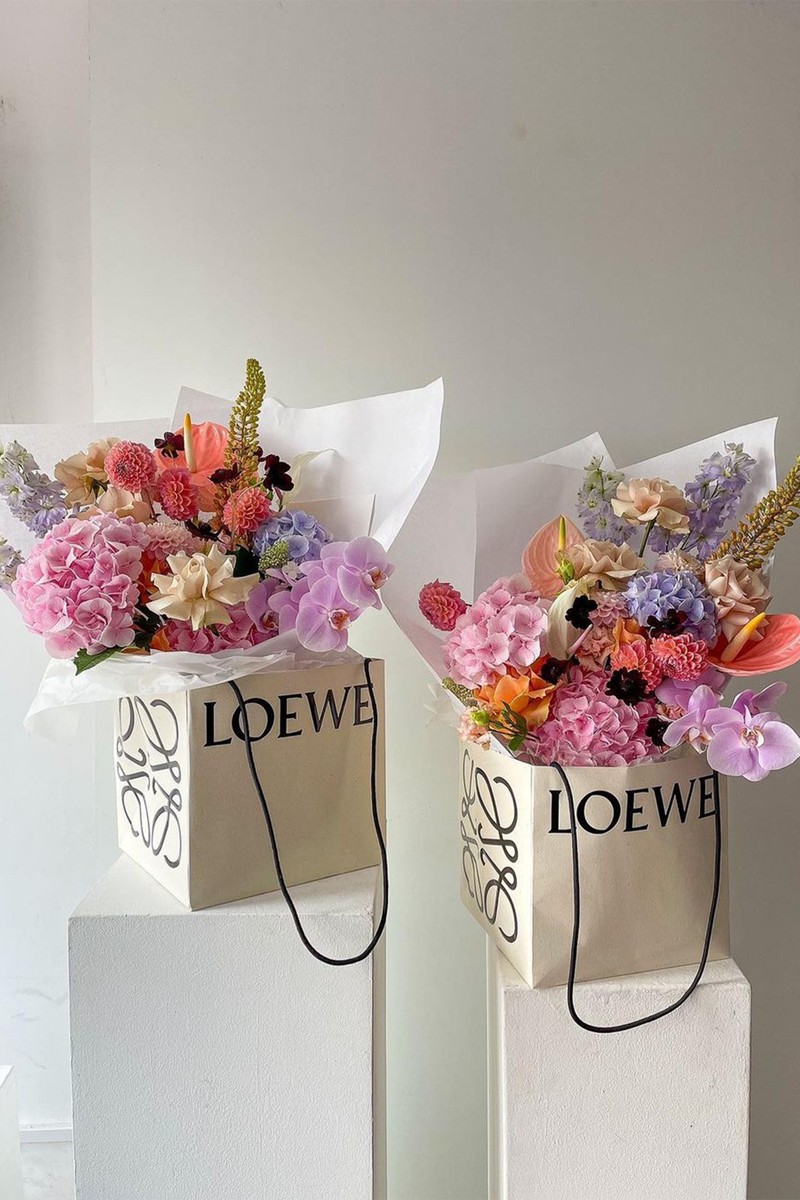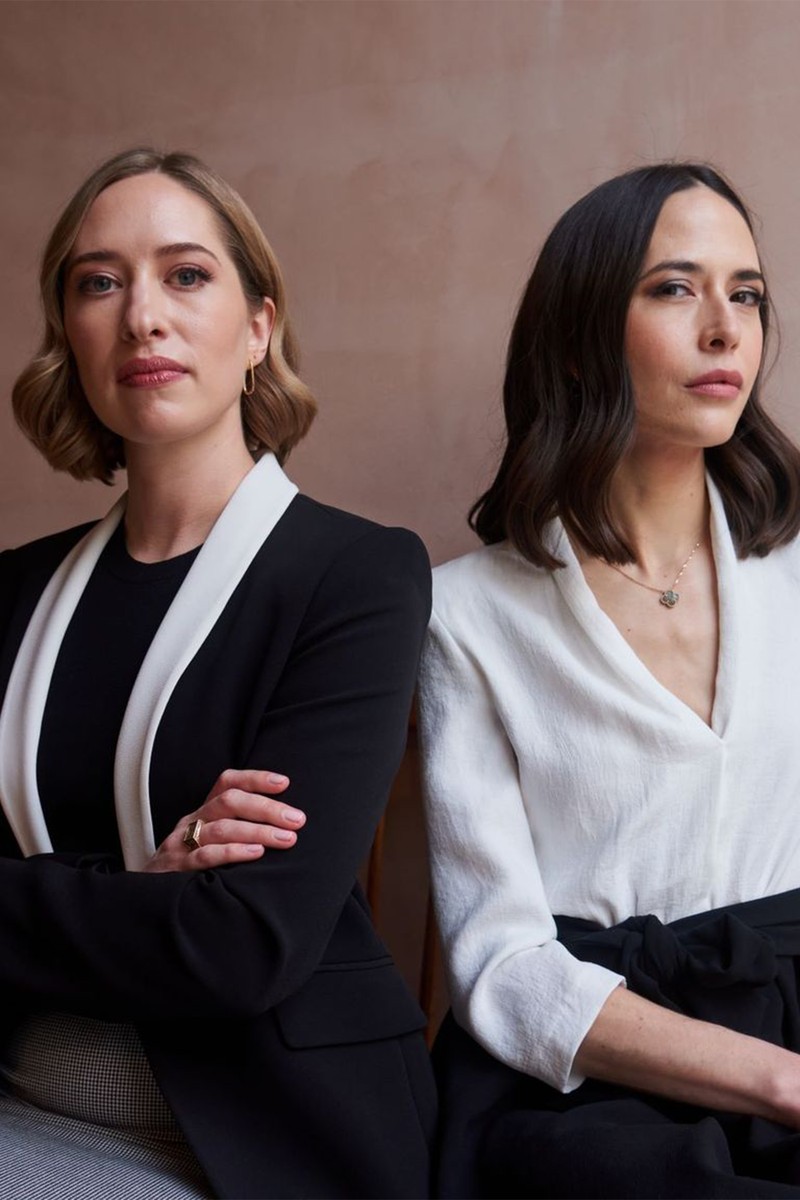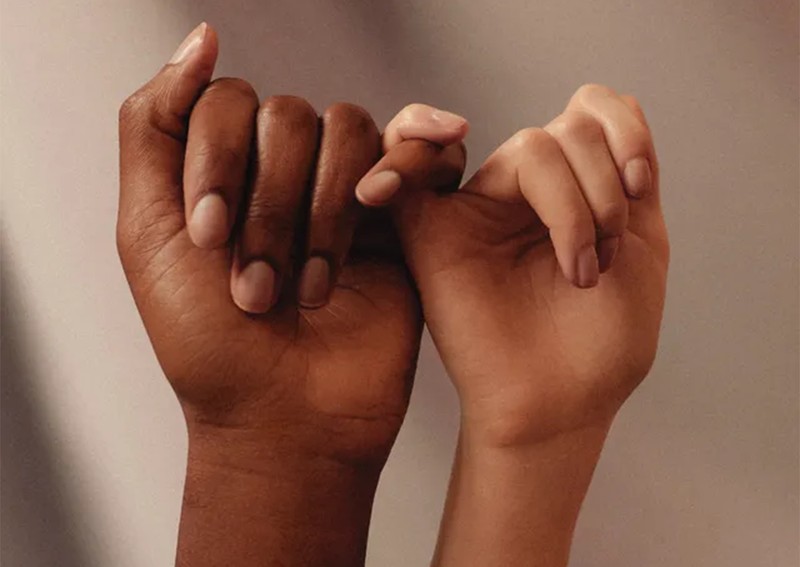
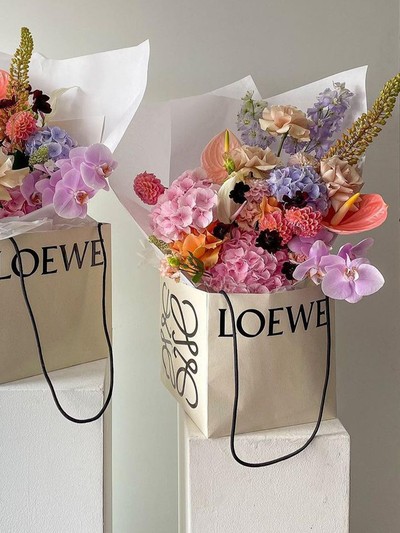
3 Female Entrepreneurs Tell Us Their Stories
Clementine Harvey-Eyres
Founder of accessories label Clementine & Mint
Clementine & Mint was born during my search for unique hair accessories ahead of my wedding. I wanted beautifully made hair pieces for myself and my bridesmaids that could be worn time and again. I’ve always loved headbands and, at a time in my life when I was attending lots of weddings, I realised I’d have to start my own business to guarantee I could get exactly what I wanted.
We launched with a very small collection. The priority was to make it financially and logistically viable, so we launched with ten headbands in five colourways and two different styles. It was really important to me that Clementine & Mint was a British brand and that the collection was made in the UK. Finding a UK manufacturer and building the right relationships took time. It would have been easier to work with a factory abroad, but I always knew being British made would be very important to the company’s story.
We sampled hundreds of fabrics to find the perfect tones. To this day, we source all of our linen from the same Irish factory. From a marketing perspective, I had a very small following on Instagram, so I turned that account into the official Clementine & Mint page. Instagram was (and still is) a key platform for building relationships with our customers and sharing the brand story. That said, we also benefit hugely from word of mouth when people wear our products to events.
My background was consulting and retail management. However, my husband worked in the e-commerce world, so that was a big help in terms of the less glamorous but very important elements like stock management, logistics and fulfilment providers. There was a lot of learning as I went, and many hours spent on Google and reaching out to friends to ask for advice.
Operating in an industry that typically works at least a season or two ahead is a big challenge. As a relatively new brand, we’re still trying to figure out how far to work in advance on new collections to be able to share them with traditional press and wholesalers. It’s definitely a bit of a juggle. But one thing I’ve really learnt is that one person can’t do everything – you have to be able to work with and hire individuals that are experts in their field. For example, professional photography has become a critical part of what we do, so we work with some very talented photographers and videographers to bring our collections to life. Learning to quantify my time and invest in the right people was a steep but valuable learning curve.
Another key learning has been that quality of product is key. It’s something I’ve always felt very strongly about, but it’s taken courage to stay true to our vision and standards. The advantage is we don’t have to commit to large stock levels; we can manufacture stock and have it available for sale very quickly. In our first year and a half of operating, we used – and still do occasionally – a pre-order model for particular products. This allows for very precise stock ordering, and customers know when they purchase the product, it will be delivered by a set date. We recently launched the Ruffled Linen Robe – one of the first products to move away from hair accessories but still staying true to using beautiful fabrics and British made.
Our bestselling product is the navy blue linen slim headband. It’s so versatile and can be worn throughout the seasons. This would be followed by the white satin padded headband – which is the piece I wore on my wedding day.
My advice for other entrepreneurs is: there is never a perfect time to start. You will learn so many lessons along the way, so don't be afraid of making mistakes either; the lessons I learnt in the early days have really shaped the business today. Also, don't be afraid to reach out to fellow business owners and put yourself out there. It can feel lonely running your own business and overwhelming, but by building a network of like-minded business owners I’ve been able to share so many experiences. It’s really helped me manage my imposter syndrome.
Visit ClementineAndMint.com
Iona Mathieson & Romy St Clair
Sage Flowers Founders
Before we launched Sage, we were both looking for a career change. We had worked in our respective industries for years and knew we needed something different. We came to flowers separately – Iona worked in a flower shop and Romy was a project manager for a florist. We knew each other from the club scene and, when we found out we were both doing flowers, we arranged to meet for a coffee. Sage was born in about half an hour. We had the same references, came from the same background and had the same design cues.
We borrowed £1,000 from a friend and arranged our first pop-up. It was in a car park in Peckham, and we used buckets from B&Q and palettes from Screwfix. We invited all our friends down and cobbled together some bunches of flowers. Looking back now, it’s wild to think that anyone bought them! But we learnt a lot, kept doing the pop-ups and things got much better. Then, through friends and the nightlife scene, we secured our first commissions. We love that Sage has no boundaries. Our clients all share an appreciation of beautiful and interesting things. They come to us because we’re different, but they can always count on the quality.
Both of us had very little business knowledge before we started. Iona used to manage restaurants, so had some overview of figures and profit and loss sheets, and Romy used to work in healthcare consultancy, so she had a great way with spreadsheets and data management, but neither of us had any knowledge when it came to setting up and running a creative business. Our biggest challenge was: how were we going to make money? For our first couple of weddings, we spent more money than we made, so it was definitely a learning curve. When you start out it’s so normal to undercharge – the imposter syndrome gets to you, and you think no one will spend that much money with you. But they do. In time, we assessed our prices, protected our margins, and learnt to say no to certain projects.
Sometimes making mistakes is good, but mistakes cost time and money. When we started, we wished there was some magic manual – one that was easy to read, one you could pick up at any point in your journey and find something useful to take on board. That’s why we decided to write it. The Art of Starting is designed to be a companion from start to finish – readable cover to cover, but also easy to dip in and out of when you need some advice. There are chapters on community and diversity, as well on self-belief and imposter syndrome.
Our advice for fellow entrepreneurs would be: do your research. Also, trust your gut and take time out to rest. It can be relentless running a business; to work as efficiently as we can, we need to take time out. We’ve got so much better at making time for ourselves, and telling each other when we need a breather.
Visit SageFlowers.co.uk & buy the book here.
Kristin Cardwell
Sourcerie Co-Founder & CEO
My co-founder Alex and I are eczema sufferers. I struggled with painful patches across my arms, chest, neck and face, which flared up during my first pregnancy and lasted for over a year. Prescription steroid creams only made things worse, so I wanted to find other ways to soothe my skin. Despite our prior experience working in beauty, there was no easy way to figure out which products would irritate our skin and which ones would help. The best recommendations for new products (and the ones that actually worked) all came from other people like us. That’s when I thought, can’t we find a way to scale this?
We realised how many aspects of our lives had become personalised. So much of what we buy is based on the interactions and feedback of millions of people like us, and Sourcerie – an online beauty platform where you can shop hundreds of brands and products based on personalised recommendations – is our answer to simplifying self-care.
We’ve created a personalised shopping experience using community-powered reviews. We started by doing a lot of research, speaking to consumers and leaders in the industry – we wanted to understand what problems other people faced when trying to find the right products for them, and what challenges brands had in trying to create products for their target customers. We ran trial groups with diverse groups of people and also self-funded some software development and data work to build the foundations of our data platform and algorithm, to test how accurately we could use reviews to create a recommendation engine.
Once we had confidence in the tech and the industry need, we went out to fundraise our first pre-seed round. We successfully raised £1.8m from angel investors and venture funds, which allowed us to build the team we needed to launch. One piece of advice I received early on in the start-up journey was to choose your co-founder and your problem, not to choose the solution you want to build. This has definitely proven to be helpful. Running a start-up is hard, but having a partner to run it with makes it fun.
Our recommendation engine is based on hundreds of thousands of user reviews. The tech powers 3 billion distinct user profiles and a bespoke experience for every individual – our top recommended products will be different for everyone. Once a customer creates their profile on Sourcerie, they get their own unique custom homepage, or custom ‘shop’ – enabling them to shop a curated selection across multiple e-commerce stores in a single place. It’s a curation of reviews from people who share similar profiles, as well as a curated selection of products.
he truth is, entrepreneurship is not glamorous. It’s a series of constant problem solving from one day to the next. Alex and I love the problem solving and variation, but it’s a lot more fun dealing with it together. We tend to feed off of each other’s energy when things do get exhausting. My best advice is to find a co-founder who you get on with, who thinks in a different but complementary way to you, and who you want to be around even during the tough times.
Visit Sourcerie.co
DISCLAIMER: We endeavour to always credit the correct original source of every image we use. If you think a credit may be incorrect, please contact us at info@sheerluxe.com.
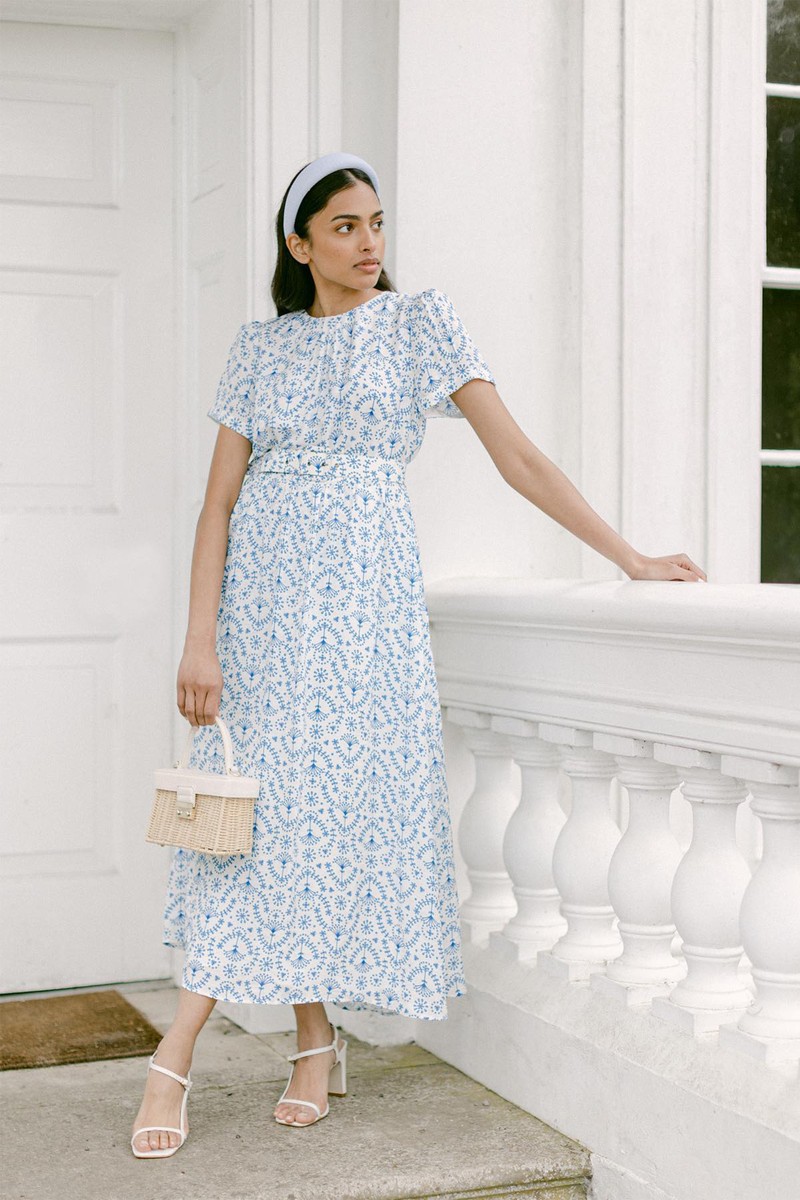
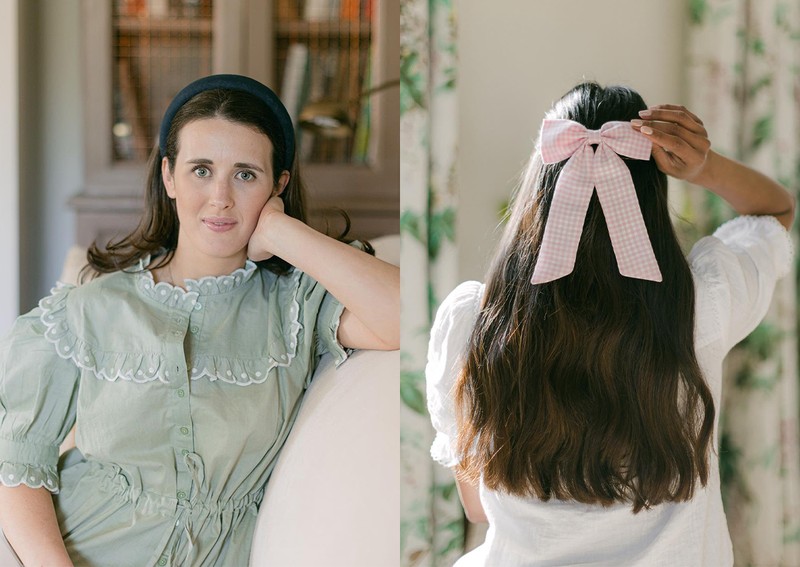
/https%3A%2F%2Fsw18.sheerluxe.com%2Fsites%2Fsheerluxe%2Ffiles%2Farticles%2F2023%2F05%2Fsage-flowers-full-bleed-image.png?itok=fMqm6Ljm)
